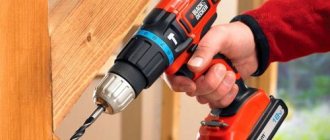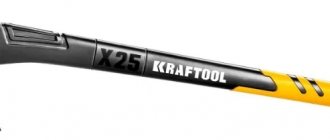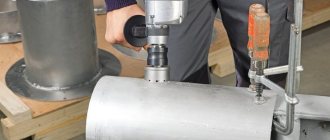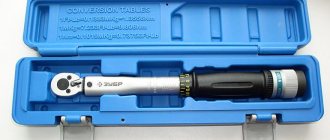People who are in one way or another connected with electronics and electrical engineering often use measuring instruments that can show various parameters of the electrical network: current, voltage, resistance, etc. Modern devices, as a rule, are electronic and have almost completely replaced analog ones. They combine all these and many other functions and are called multimeters. This article will discuss: what a multimeter is, instructions for using this device, technical characteristics, main functions and a little history.
Story
A multimeter is a universal combined device with which you can measure the main indicators of any electrical network. It includes an ammeter, voltmeter and ohmmeter, as well as other functionality. At the moment, there are two types of millimeters: analog and digital. Although analog devices are outdated, they continue to be used by many people to solve everyday problems related to electronics and wiring.
Multimeter included
As for history, before the invention of combined instruments there were devices for measuring individual quantities. In the last century, voltmeters were produced in Germany, providing round onion clocks. After this, devices with two scales showing two measurement ranges began to be produced. They had probes that were marked with different colors and holders for a chain or rope.
Scheme of connecting the device to the network
Important! A few years later, voltmeters with several measurement modes appeared. For example, pressing a button switched the device to a different measurement range. One of the probes became flexible and rubberized. This made it possible to take measurements even faster and more comfortably.
Further development involved combining measuring devices together to facilitate use and reduce their size. By 1920, the so-called ampere-voltmeter appeared. More accurate and highly functional instruments began to appear with the development of electronics and the invention of digital multimeters.
Antique apparatus
What types of multimeters are there?
Different generations of electricians can each explain in their own way what a multimeter is, since these devices are constantly being improved. Some people think that this is a fairly large and heavy box, while others are accustomed to miniature devices that easily fit in the palm of their hand.
First of all, all multimeters are divided into devices according to the principle of operation - they are analog and digital. They are easy to distinguish by their appearance - analogue ones have a pointer dial, while digital ones have a liquid crystal screen. Making a choice between them is quite simple - digital ones are the next stage in the development of these devices and outperform analog ones in most respects.
When the first digital multimeters first appeared, they, of course, had certain design flaws, allowing us to say that this was a toy for amateurs, but even then it was clear that digital devices have enormous potential and over time they will displace analog devices.
Analog multimeters
In some cases, the use of analog multimeters is justified even now - they still have a number of advantages that are determined by the design of the measuring device itself. Its main part is a frame with an arrow attached to it. The frame can rotate due to the influence of an electromagnetic field on it - the stronger it is, the greater the angle of rotation.
Based on this, the main advantage of an analog device is highlighted - the inertia of displaying measurement results.
In simple words, this is reflected in the following properties:
- If you need to measure not linear, but variable data (V, A or Ω), then the arrow will show their changes in real time, clearly demonstrating the entire amplitude of signal fluctuations. In this case, the “digital” result will be shown in steps - its value will change every 2-3 seconds (this depends on the sensitivity of the device and its data processing speed).
- A pointer multimeter can detect parasitic voltage or current ripples. For example, if there is a direct current in the circuit with a value of one ampere, but every few seconds it can briefly increase/decrease by 1/10 or 1/5, and then return to the nominal value. In this case, the digital tester may not show any changes in the signal at all, but the analog shooter will at least “shudder” at these moments. The same thing will happen in the presence of persistent interference - if voltage fluctuations are already noticeable - the digital multimeter will constantly show different data, and the analog one will simply show some averaged - “integrated” value.
- A digital multimeter requires a power source to operate, while an analog multimeter only needs a battery if you turn on the ohmmeter mode.
- Different devices may have different extreme conditions. If digital ones cannot operate without proper protection, for example, in a high-frequency electric field, then for analog ones this is not a serious test - they can even serve as indicators of its presence.
All of the above applies not only to multimeters, but also to each analog measuring device separately - an ammeter, voltmeter or ohmmeter.
Digital multimeters
Their main trump card is simplicity and functionality, which are reflected in the distinctive properties of such devices:
- To manufacture such a device, it is not necessary to carry out elaborate work on the manufacture of electromagnetic coils and securing them in the housing, debugging and subsequent adjustment during operation.
A digital multimeter is simply an electrical board into which contacts and control elements are soldered.
- The values that are displayed on the screen do not require “deciphering” or interpretation, which is often the case with analog devices, the readings of which may not be understandable to a non-specialist.
- Vibration resistance. If shaking simply has the same effect on digital devices as on any part, then it affects the pointer of analog ones very noticeably, and in some cases can lead to damage to the device.
- Unlike analog devices, a digital multimeter self-calibrates every time it is turned on, so there is no need to constantly set zero on the dial, which is a disease of any pointer instrument.
This is not the entire list of possible advantages of a digital multimeter - only those that clearly distinguish it from an analog device.
As a result, if you engage in electrical work seriously enough, then it is advisable to have devices of both types in your arsenal, since some of their capabilities are diametrically opposed.
How measurements are carried out with digital and analog devices - in the following video:
Appearance
The appearance of the multimeter is practically no different from portable ammeters and voltmeters. It is a flat box with a digital or analog panel and meter settings, to which two probes are attached. The body of such a device is made of non-flammable plastic and rubberized side inserts. Rubber shockproof covers can give it additional protection. Most often, the body is made in the shape of a rectangle with rounded edges.
Stationary devices are less attractive in appearance. Their cases are made of metal or strong plastic. By themselves, they resemble a small box or a car radio, in the front of which all the sensors and displays of measuring instruments, buttons, and switches are located.
Type of conventional multimeter
Design Features
The design features of multimeters are almost identical, since everywhere the displays, control buttons and measuring scales with symbols are located in the same places. The center of the device usually contains a dial switch with a knob indicating which mode is selected. Designations or inscriptions are placed around the dial switch and are grouped into frames by groups and modes.
You may be interested in Electronic voltage converter from 12 V to 220 V
Any digital multimeter is equipped with a liquid crystal display that displays measurement results. Near it there may be additional buttons for turning on the backlight, which are also often located on the sides of the device.
Device with probes
At the very bottom of the panel or on the back of the device there are sockets for inserting probes. One of them is marked with the name COM, meaning negative contact for the black probe, and the other two are suitable for inserting the red probe. They differ in that one is suitable for measuring simple parameters, and the other is used at high current levels.
Important! The internal design is no different from conventional voltmeters and ammeters and contains all the same mechanisms for analog instruments and converters for digital ones.
Vertebral cable socket
Application in motorcycle and automotive equipment
When servicing automobiles and motorcycles (motorcycles include various garden machines with internal combustion engines and boat engines and other similar equipment), the serviceability of generators, starters, and batteries can be checked using a multimeter.
In all these cases, a multimeter is used to obtain voltage and current data. Measurements can be carried out in various operating modes of the units being tested.
In internal combustion engines, the ignition system is checked. To do this, candles can be rung and the resistance of the insulators is checked. Ignition coils are tested.
If any systems fail, the wiring in the cars and drive motors are checked for breaks or short circuits.
Using a multimeter, you can determine, for example, whether the spiral in an incandescent lamp is intact without removing the lamp from the headlight unit. To do this, just disconnect the headlight power connector and you can measure the lamp resistance, and then the supply voltage.
As a result, it can be determined whether the lamp really needs to be changed or whether it is necessary to look for an open circuit. In the latest car models, this is very important, since to replace a lamp sometimes you have to disassemble almost the entire front trim.
Specifications
Analog multimeters consist of a pointer magnetic-electronic device called a microammeter, resistors to measure voltage, and shunts to measure current. If you switch to the voltage and current measurement mode, the ammeter is connected to these resistors using diodes.
The obvious disadvantages of these devices are:
- Lack of high input resistance for voltage measurement. The technical characteristics of analog devices are highly dependent on magnetoelectric sensitivities. The higher they are, the higher the input resistance and the lower the voltage drop in measurement mode. This will greatly reduce the influence of the multimeter on the network;
- Inconvenient measuring scales. Some modes have nonlinear and inverse scales, with zero at the rightmost position. They are always zeroed before measurements;
- Polarity dependent. An analog device cannot determine polarity automatically. This is not convenient and such devices are practically unsuitable for measuring alternating voltage and current.
When measuring current, you need to plug the probes into sockets with descriptions that include the letter “A.”
The simplest are digital devices with a bit depth of 3.5 and an error of no more than 1%. There are also more expensive devices with an error of up to one tenth of a percent. The digit capacity determines how many digits the multimeter display can show. 3.5 means that the display will show three full digits (each from 0 to 9) and one limited digit.
The characteristics of multimeters are almost the same as voltmeters. The device is characterized by:
- Internal resistance, which plays an important role when measuring voltage. The accuracy of the indicators directly depends on it;
- Atmospheric and environmental factors. They determine how the device will behave at high or low temperatures, in aggressive environments. By following the information about environmental factors in the instructions for use of the device, you can achieve more accurate measurements;
- Accuracy, which depends on many factors: conditions, resistance. Device model. Modern models have relatively low accuracy with small sizes;
- Frequency and measurement ranges. The first range characterizes the device in terms of its ability to capture certain signals, and the second indicates the smallest and largest indicator that the device can measure in any mode;
- Appearance
You might be interested in this Designation and principle of operation of a triac: explanation for dummies
Measuring internal battery resistance
Design and principle of operation
Each multimeter works on the general principles of measuring certain values, as well as according to Ohm's laws for electrical circuits. Within one function, certain rules can be applied. For example, clamps are used to estimate the current strength in a cable according to the operating principle of a single-turn transformer. Similarly, a multimeter measures voltage by connecting it in parallel to the target circuit.
To display the value of the evaluated parameter, the device is equipped with a monitor. This can be a simple and clear scale with an analog needle or a multi-digit register of a digital display. The data on the monitor comes from the conversion circuits, with a significant reduction in a certain reference parameter.
Important! Knowing the general laws of operation of electrical circuits is not only desirable, but also mandatory. In this case, the use of a multimeter will be effective, and the analysis data will be reliable.
The device must also be used according to the rules applicable to measuring instruments. They state that all tests should begin with the maximum score range. That is, for example, when checking the voltage in a 220V socket, the device still needs to be adjusted to take into account the peak of a possible change in the parameter, that is, a 380V three-phase network in the event of a zero break. It is recommended to set the maximum possible limit and gradually reduce it. Although a modern multimeter works quite well under overloads, if the measured parameter significantly exceeds the established limit, the device will fail.
Main functions
The technical characteristics of modern devices have significantly expanded their areas of use. Among the main functions:
- Standard measurement of quantities (DC and AC current, voltage, resistance);
- Measurement of inductance and capacity of batteries;
- Temperature determination using sensors and a thermocouple connected separately;
- Determination of frequency in Hertz and revolutions per minute;
- Setting the duty cycle, pulse duration and intervals between them;
Display of a modern device
In addition, almost all models can carry out ringing of the network and cables in various modes to determine their integrity. The latest models also have semiconductor testing capabilities, test signal generation, and LCD displays that show signal graphs and waveforms.
Multimeters produced now have, although not always, the ability to backlight the display and record readings when certain keys are pressed. The controllers and processors installed in the multimeter allow you to perform calculations and even remember readings. They are the ones who are able to show the real root mean square value of the signal, taking into account many other factors. Conventional devices do not have this function and cannot be used in networks with nonlinear loads.
A device that allows you to show the waveform
For people seriously involved in engineering or electronics, accuracy and resolution will be important characteristics. They do not depend on each other in any way. Resolution is determined by the bit depth of an analog-to-digital device capable of displaying a certain number of characters on the display. No matter how many of them there are, the accuracy will be determined not by this, but by what algorithm the ADC uses and what characteristics it has.
Important! It’s rare, but some models have both a dial and a digital indicator or two digital ones. This allows you to simultaneously measure several quantities.
ADC of a simple multimeter
As already mentioned, some multimeters have the ability to display low-resolution waveforms on the LCD display. Therefore, with a stretch, they can be classified as oscilloscopes.
Further development of technology involves adding even more functions and devices in one small box.
The most common ways to use a multimeter are to measure current, continuity, resistance and voltage measurements. They are worth examining in more detail.
A device capable of measuring the duty cycle of pulses
Current measurement
The main function of a multimeter is to measure the current in the network. The main rule for such measurements is to connect the device in series to the circuit. The figure below shows the correct connection.
Current consumption measurement
The negative (black) pin plugs into the COM socket. The red, that is, positive probe is plugged into the socket labeled mA or xA. In this case, x is the maximum current value measured by the device. It all depends on how much current is expected in the circuit. If this is unknown, then it is better to measure through xA.
You might be interested in How to measure voltage
Measuring current in the device
Calling
This is a feature that testers often don’t have. It allows you to determine the location of the breakdown in cases where a certain bit device does not work due to problems with the cable. The algorithm for dialing is as follows:
- Check the electrical device for integrity and determine the required conductor;
- Set up the device to measure resistance;
- Create a closed circuit that includes a multimeter, measuring leads and the conductor itself;
- A small current is injected into the area and its resistance is determined - the simplest way of “dialing”.
Testing the part with a tester
Important! Dialing is a procedure that allows you to determine whether there is contact between wires or not. The current created by the multimeter passes through the circuit, the voltage is recorded and a signal is issued indicating continuity or breakage. This way you can check wiring and much more.
Resistance measurement
The principle of resistance measurement is based on the most important law of electrical engineering - Ohm's law. Its formula has been known to everyone since school: current strength is equal to voltage divided by resistance. The device operates according to this ratio. The voltage source is a built-in source - a battery. Having measured the current and voltage, the device can easily show the resistance.
Resistor resistance measurement
The sequence of actions is as follows:
- Set the required mode;
- Inserting probes is similar to measuring current;
- Touch them to the positive and negative contacts of the conductor: resistor and other parts.
Voltage measurement
Voltage measurement is distinguished by the fact that for correct results it must be carried out by connecting contacts parallel to the network. This process is similar to measuring resistance.
To measure AC voltage, you just need to insert the probes into a power outlet. It doesn't matter exactly how they are inserted. This type of voltage does not have positive and negative poles, but only phase and zero value. If it shows zero, then the voltage does not pose a threat to life, but any other voltage can impair health and kill.
Home Wiring Voltage Measurement
The outlet should show 220 Volts, but this is normal, as it “jumps”. It can show both 215 and 210 Volts. DC voltage is measured in the same way: in parallel
Battery voltage measurement
Expert advice
- To measure the voltage in the network or terminals of a car battery, and test the continuity of the circuit, it will be enough to purchase a simple multimeter with basic functionality;
- If you plan to use the device in a workshop, production, garage, etc., pay attention to devices made in a dust- and moisture-proof shockproof housing, taking into account individual requirements for its dimensions;
- A radio amateur may need not only digital values, but also data on the shape of signals. In this case, we recommend taking a closer look at a device with an oscilloscope.
Watch a video on how to choose a multimeter for your home
Instructions for safe use
The operating instructions for multimeters duplicate the instructions for using all portable measuring instruments such as voltmeters and ammeters. It assumes the following rules:
- Carry out measurements in areas where high voltage and current values are observed only in protective equipment;
- Carry out any measurements only with dry hands;
- Do not use multimeters in aggressive environments and at high temperatures;
- Comply with the requirements of GOST 12.3.019-80, which describes the rules for operating electrical measuring instruments.
Diagram of a typical multimeter using the DT model as an example
. Thus, a multimeter is a device that has all the functions of popular instruments for measuring voltage, current and resistance. In addition, it has a number of unique functions that conventional testers and single-function devices do not contain.
What characteristics to look for when choosing
A multimeter is always selected in accordance with the future conditions of its use and criteria for accuracy and variety of measurements. For household needs, a device with minimal functional charge, inexpensive, compact and lightweight is suitable. Such a device will allow you to quickly measure one of the basic parameters of an electrical circuit and check its integrity.
For professional use, you will need a device that exactly matches the future working conditions. For example, intrinsically safe, meeting electrical safety requirements. People who repair complex electronic or computer equipment will need a multimeter in oscilloscope format.
In any case, today the market is ready to offer a large selection of models, among which you will find a copy with the optimal set of characteristics. The main thing is not to try to save as much as possible. It is recommended to buy products from well-known manufacturers, having first carefully studied reviews about their performance and overall ease of use.









